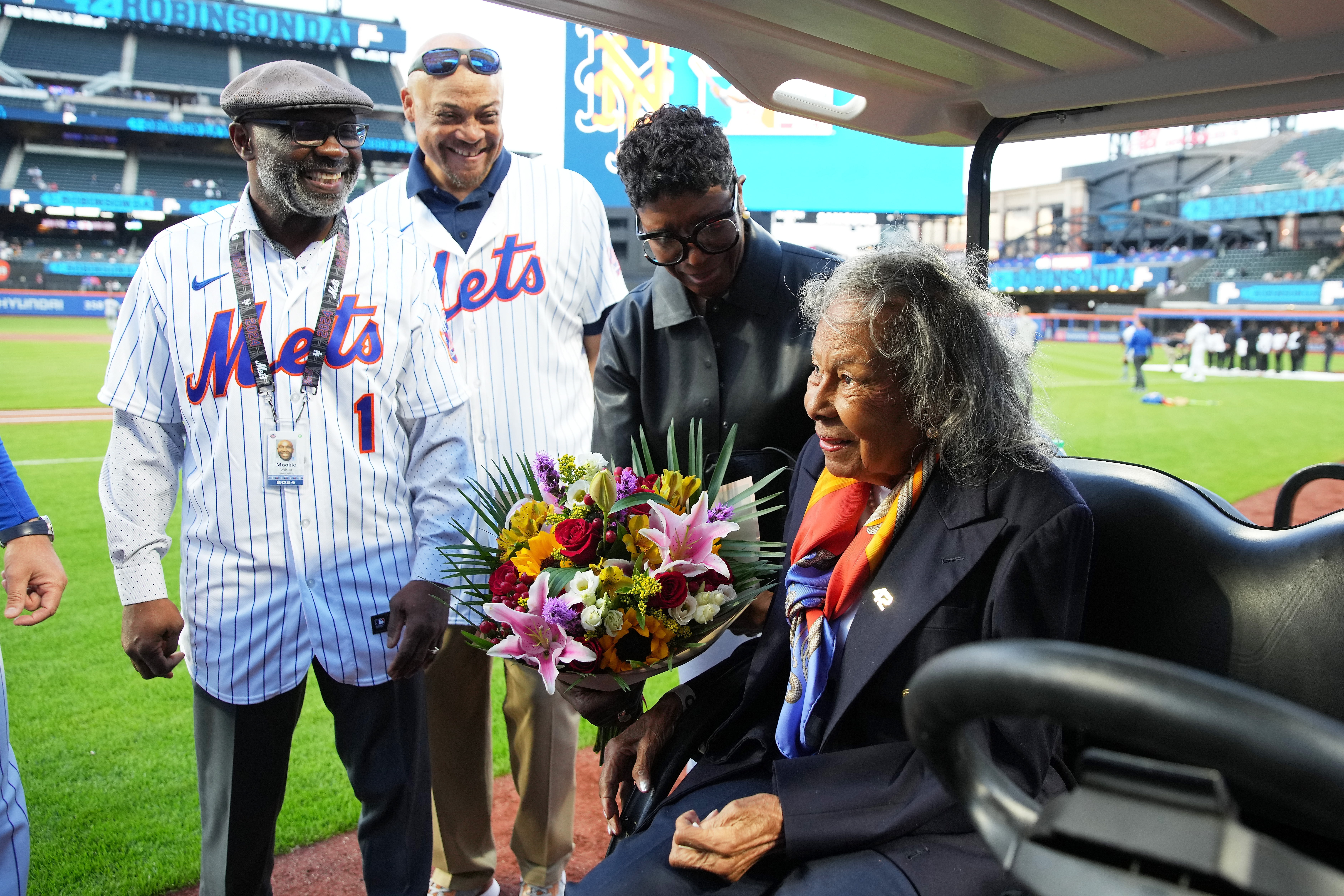
Phillies (3-5) vs. Padres (3-5)
7:05 p.m. on The Comcast Network
The Phillies' pitching staff turned in another impressive game Tuesday night to even their first home series with the Padres. Charlie Morton answered the call after Aaron Nola, Jeremy Hellickson and Vince Velasquez had preceded him with solid starts.
Morton took advantage of a relatively weak San Diego lineup that swings and misses a lot by pitching 6⅔ shutout innings, allowing three hits and striking out seven.
Can Jerad Eickhoff keep the string going tonight? Let's take a look:
1. Phils' clear strength
Heading into the season, the Phillies' starting rotation looked like it would be the foundation of the team. Through eight games, the unit has exceeded even those expectations, posting a 2.87 ERA with 50 strikeouts and 12 walks in 47 innings.
Have a look at some of these MLB ranks for the Phillies' starting staff:
• 4th in ERA (2.87)
• 2nd in WHIP (0.94)
• 2nd in opponents' batting average (.187)
• 2nd in opponents' on-base percentage (.245)
• 2nd in opponents' slugging percentage (.322)
• 2nd in percentage of plate appearances ending in a strikeout (26.9 percent)
• 5th-lowest "hard contact" rate (24.4 percent)
MLB
Just very impressive stuff. The reason the Phils have been competitive in all but one game is the starting rotation, which is substantially better than it was last season. Too often in 2015, games were over by the fourth inning. The Phillies used pitchers like Aaron Harang, Jerome Williams, Sean O'Sullivan, Severino Gonzalez and David Buchanan, guys who needed absolutely perfect command to get outs.
This pitching staff doesn't need to be perfect or lucky to get outs. Each member of the rotation has something to hang his hat on. Nola has impeccable command and a curveball that can freeze hitters. Eickhoff has one of the very best curveballs in the National League. Velasquez has a mid-90s fastball and probably the best overall stuff in the rotation. Morton has a sinker that induces a lot of groundballs and a curve that generates plenty of whiffs.
Let's see how long they can keep it up. Five of these eight games have been against the Reds and Padres, teams that figure to lose around 90 games in 2016.
2. Herrera starting to hit
Odubel Herrera is a key to this Phillies lineup because outside of Maikel Franco, nobody else has a game-changing skill. Herrera is not a power hitter who can consistently change a contest with one swing, but his combination of speed, bat speed and doubles/triples pop works nicely at the top of a lineup.
Herrera last night tripled in the Phillies' first run with two outs in the sixth inning. He lashed a Robbie Erlin offering down the right field line and turned on the jets to reach third on a play that would have been a double for most.
Herrera also walked twice on Tuesday. His on-base percentage is at .364 on the season. Before the year, I wrote that for the Phillies' offense to work, they'd need Herrera and Cesar Hernandez to post OBPs of at least .340. So far, Herrera is at .364 and Hernandez .370. The issue is that Franco and the first basemen haven't hit for much power, and the Phillies are getting no offense whatsoever out of shorstop, left field and right field.
But Herrera looks like he's locking in. And he continues to run deep counts and see a ton of pitches. Herrera leads the National League with 4.85 pitches seen per plate appearance.
One other Herrera note: At some point, his emphatic bat flips when he thinks he's worked a walk are going to come back to bite him with a home-plate umpire. Herrera's just showing excitement, but if the ump rules the pitch a strike after he's already flipped the bat, it could come across as him showing up the man in blue.
3. More efficiency from Eickhoff
Eickhoff had an up-and-down first start at Citi Field. He needed 50 pitches to get through the first two innings, then settled in and threw just 28 over the next three innings. At one point, Eickhoff retired 11 of 12 Mets, allowing only an infield hit.
For Eickhoff to be successful, he has to be able to command his fastball in the first inning and have the release point on his curveball in two-strike counts. As we've written before, he can't often get away with making mistakes with his 90-91 mph fastball — it just doesn't have enough juice or movement.
But this weak Padres offense has never before seen Eickhoff, so this could be a successful start for him as long as he finds that command earlier than he did against the Mets.
Really think the key hitter tonight will be Jon Jay, the Padres' left-handed hitting leadoff man. Jay is a pesky, disciplined hitter with gap power. If Eickhoff can retire him in the first inning and create situations where Matt Kemp and Wil Myers bat with the bases empty, he should fare well.
4. Another anonymous mound opponent
The Phils face 25-year-old righty Colin Rea, who's made all of seven big-league starts.
Rea, a 12th-round pick in 2011 out of Indiana State, wasn't a top prospect coming up. He had a terrific run at Double A in 2015, posting a 1.08 ERA in 12 starts before advancing to Triple A, where he struggled a bit. Still, the Padres promoted him to the majors late last season and he went 2-2 with a 4.26 ERA in six starts, striking out 7.4 batters per nine innings.
One of those starts was against the Phillies at Citizens Bank Park. Rea allowed four runs over five innings in a Phils win. Darnell Sweeney hit a two-run homer off of him.
Rea throws a four-seam fastball and two-seam fastball in the 93 mph range, a cutter in the high-80s, a curveball and changeup.
5. Franco, bullpen and Kemp
• Tuesday's game was the first this season Franco did not reach base. He did, however, make a stellar defensive play when he was shifted to the second base area with lefty Brett Wallace batting. Franco ranged over the middle and made a Derek Jeter-esque jump throw to first while moving in the opposite direction. Add it to the highlight reel for the most instinctive defensive third baseman the Phillies have had since ... Scott Rolen?
• The Phillies' bullpen is up to 10⅔ consecutive scoreless innings. The relievers have gone four straight games without allowing a run to cut their collective ERA exactly in half from 12.66 to 6.33.
• It's been interesting to observe the evolution — and not in a good way — of Matt Kemp's career. When he came up with the Dodgers in 2006, he was as athletic as any outfielder in baseball. He had speed, power, and he looked like he should be one the better defenders. His work ethic has been called into questions at time, but it's the injuries — he has arthritis in both hips — that have sapped him of that speed. He also loses concentration in the field. But at this point his value is tied almost entirely to his power.


